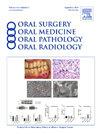Use of virtual reality as a radiology teaching tool for dental students
IF 2
3区 医学
Q2 DENTISTRY, ORAL SURGERY & MEDICINE
Oral Surgery Oral Medicine Oral Pathology Oral Radiology
Pub Date : 2025-02-04
DOI:10.1016/j.oooo.2024.11.004
引用次数: 0
Abstract
Objective
To evaluate the effectiveness of a customized virtual reality (VR) application and its impact on radiographic image quality and the number of retakes by new learners.
Study Design
Thirty-nine first-year dental students were included in the research project. Students who had already taken dental radiology classes, had previous experience in taking intraoral radiographs, or had experience in the use of VR models were excluded. The students were randomized into 3 different groups: group A (Control, no VR use), group B (VR training and use), and group C (VR training and use + radiographic technique video). All groups attended regular lectures of the predoctoral course and a technique demonstration session. Subsequently, the students were required to complete a half full mouth series and were evaluated on the basis of the number of retakes and the graded radiographic image quality. The statistical analysis was conducted using IBM SPSS Statistics software for Windows, version 25.0 (IBM Corp.). Image quality and the number of retakes were compared among the 3 groups. Data normality was evaluated using the Shapiro-Wilk test, followed by the application of the Kruskal-Wallis and Wilcoxon rank-sum tests to compare the 3 groups.
Results
The use of VR had a significant effect on the number of retakes and the quality of the radiographs (P < .05). The use of VR significantly improved students' grades (mean grades 7.77 vs 9.38 vs 8.31). The average number of retakes was 6.62 for group A, 3.38 for Group B, and 3.46 for Group C.
Conclusion
The use of VR as a teaching tool had an impact on the number of retakes and the quality of the radiographs by new learners. When using the VR application, students had fewer retakes and greater radiographic technique grades. The use of VR should be encouraged in dental education.
求助全文
约1分钟内获得全文
求助全文
来源期刊

Oral Surgery Oral Medicine Oral Pathology Oral Radiology
DENTISTRY, ORAL SURGERY & MEDICINE-
CiteScore
3.80
自引率
6.90%
发文量
1217
审稿时长
2-4 weeks
期刊介绍:
Oral Surgery, Oral Medicine, Oral Pathology and Oral Radiology is required reading for anyone in the fields of oral surgery, oral medicine, oral pathology, oral radiology or advanced general practice dentistry. It is the only major dental journal that provides a practical and complete overview of the medical and surgical techniques of dental practice in four areas. Topics covered include such current issues as dental implants, treatment of HIV-infected patients, and evaluation and treatment of TMJ disorders. The official publication for nine societies, the Journal is recommended for initial purchase in the Brandon Hill study, Selected List of Books and Journals for the Small Medical Library.
 求助内容:
求助内容: 应助结果提醒方式:
应助结果提醒方式:


